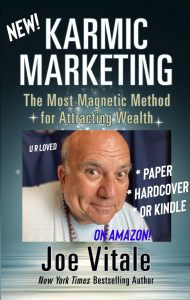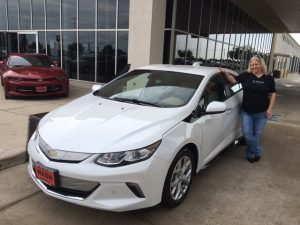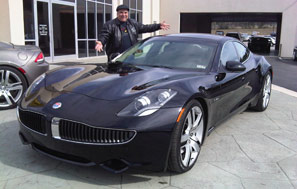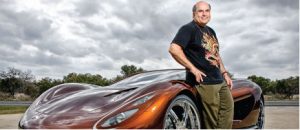Tag: henry ford
How to Become a Wealth Magnet
My latest book, Karmic Marketing, became a #1 bestseller the very day it was released.
The next day, it hit yet another bestseller list.
And the day after that, yet another.
What’s interesting is that I didn’t even try.
I told my followers via email and social media; the rest was an organic response.
Why has every successful person in history – from
Seneca, Ford, Carnegie, Barnum, Rockefeller and Getty to Bezos,
Musk, Gates, Buffett and Zuckerberg – used this secret?
The book reveals how to become a “wealth magnet.”
The secret is pretty controversial, even if it’s been proven throughout history to work.
Go get Karmic Marketing on Amazon right now in hardcover, paperback or for your Kindle reader.
And – Expect Miracles!
Ao Akua,
Dr Joe
PS – News Flash: I have a weekly online television show beginning in 2022! It’s all about “Zero Limits Living.” Follow me on Instagram for updates. I’m DRJOEVITALE there and on Facebook.
Attracting Electric Cars
My wife, Nerissa, drives the Chevy Volt and loves it. She’s had it since 2012. Her electric car never fails, always looks great, contains what feels like enormous room inside, and rides smooth on our errands and trips. It’s a great car.
It’s so great that we just went and traded it in for a brand new 2017 Chevy Volt.
But not all electric cars are so cool or so reliable.
I owned the Fisker Karma a few years ago.
It was the opposite.
It was a nightmare to drive, though it was stunningly beautiful.
There were over a dozen things wrong with it, and the company.
Eventually the company went bankrupt, and I sold the car at a big loss.
Of course, Tesla is all over the news.
I called them when they announced their limited edition of 100 Roadsters around 2008.
But Tesla talked me out of buying one, saying they didn’t have service stations in Texas and wouldn’t be able to repair my car without transporting it to California or sending a technician to me.
Good thing I passed on that roadster, as even Elon Musk today admits that his first car was a disaster.
In a June 2016 Road and Track article online, Musk was reported as saying they had “no idea what we are doing,” and characterizing their original efforts as “completely clueless.”
Tesla is still getting lots of the media attention and I’m glad to see it.
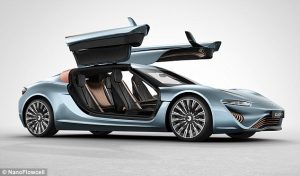
This German marvel runs on salt water, gets 960 hp and 373 miles to the tank, but will it ever be made?
Tesla’s new cars look hi-tech, dependable, and safe.
But I live in Texas, where I have seen the car on the road but have never test driven one. (I asked for a test drive and so far, over three weeks later, no one has replied.)
Besides, I’m not all that keen to get into another electric car, given my trauma with the Fisker.
And the most recent news was of a man killed while using the auto driving feature on his Tesla.
Apparently, the long range electric sports car is not yet out of the woods.
But all of this got me wondering about the origin of the electric car.
In an episode of Jay Leno’s great new TV show, Leno’s Garage, he drove an electric car from the early 1900’s that could get 90 miles on a charge.
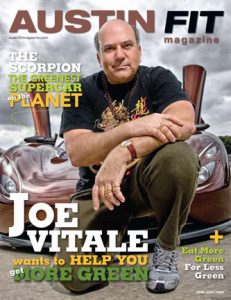
I promoted and invested in the Ronn Motors Scorpion, a stunning hydrogen sports car, only to see the company go bankrupt
What happened to it?
What happened to all the other early electric cars?
So I did some research.
Turns out in the late 1800s and early 1900s, the most popular car was the electric.
There were steam driven cars, which no one liked, and a few gas driven cars, which no one knew how to drive or fix.
But people were ready for something new, as the feces and urine filled streets where horse drawn carriages turned the roads into a sewer of slosh, was just too much and too unsanitary.
The electric was clean, dependable, and smart.
Or course, there were few cleared roads then.
And no driving schools.
And no battery chargers.
And few people had electricity.
And even fewer could actually afford the much more expensive electric car.
And a single battery cost more to replace than the Model T would cost to own.
For example, the price of a Detroit Electric car in 1914 was about $2,650. If you wanted to upgrade to the Edison Nickel Iron batteries, then the price went up about $600. At the same time, you could buy TWO NEW Model T’s for that same $600. (!)
It was an uphill battle for the electric car.
Of course, many tried to make it work.
Some entrepreneurial companies saw a business in an electric car taxi service.
The problem was, the cars could only drive about 10 miles before needing a charge or a battery replacement.
This was an incredible nuisance for the passenger — you could only go 5-10 miles away (!) – as well as for the driver and not to mention the cab company.
As a result, electric cars were made, but they weren’t sold easily: first because they were too expensive to buy, and second, they were too expensive to keep replacing batteries.
Most of the electric car companies went bankrupt.
And then Henry Ford enters.
Ford actually wanted to invest in the electric car, and make them.
He bought an electric car every other year for years. He and his wife loved them.
But the electric car companies created a coalition to block any competitors they didn’t like.
In short, many electric car companies got greedy and tried to create a monopoly.
Ultimately, they drove themselves off the pages of history.
The electric car simply wasn’t convenient or affordable at the time, and many electric companies were ruthless and competitive.
But that’s not all that happened to make the electric car lose power.
Thomas Edison inspires Henry Ford
It was actually Thomas Edison who threw the switch on making the gas powered car the vehicle of choice.
Edison, the king of all things electric, met Henry Ford at a now historic dinner in 1896.
The inventor listened to the car creator describe his idea of an ideal car: affordable, dependable, efficient, and requiring almost no maintenance.
In fact, Ford wanted his car to be low priced and maintenance free.
Edison heard all of this and slammed the table with his fist.
He then said these now historic words to Ford –
“Young man, that’s the thing; you have it. Keep at it. Electric cars must keep near to power stations. The storage battery is too heavy. Steam cars won’t do, either, for they require a boiler and fire. Your car is self-contained—carries its own power plant—no fire, no boiler, no smoke and no steam. You have the thing. Keep at it.”
Ford listened.
As a result, Ford moved the world with his new car, which was a public hit.
The electric car drifted out of awareness, except for a few failed attempts over the decades at resurrection, and the fossil fuel driven car won the race.
By 1919, virtually all electric car production was stopped, and the electric began to fade away.
It wouldn’t be until the 1970s, when gasoline prices hit record highs, that the mass public started to look for an electric car again.
I’m joining in that search.
A decade ago, when I met the people who make Panoz race cars (I have two of their street legal beauties), I told them if they make an environmentally friendly sports car, I’d buy it.
They haven’t yet.
When I heard of Ronn Motors inventing a hydrogen driven sports car, I ordered the first one, bought stock in the company, invested in the company, promoted the car on national television and on the front page of local magazines.
The company went bankrupt.
When I heard of a sports car that could run on sea water, I contacted the German company and asked if I could invest in it and order a car.
No one answered.
When Porsche made a one-of-a-kind 918 Spyder electric hybrid sports marvel, I asked the price.
They said $845,000. I passed (and almost passed out).
When BMW (a car maker I’ve always loved), developed the electric hybrid sports car they called the i8, I ordered one.
But after half a year of waiting, the salesman said it would be three more years before I would get my car.
I cancelled my order.
I could go on.
Today the marketplace is ready for an electric (or solar or sea water or any environmentally safe) car that is affordable, dependable, convenient, and attractive.
Tesla is working in that direction.
I’ll keep watching them, and other auto makers like Audi, Acura, and Nissan, to see who wins the next race. I may be a specialist in how to attract a new car, but the car also has to exist.
Meanwhile, we now have Nerissa’s 2017 Chevy Volt.
Let’s charge up and go!
Ao Akua,
PS – Some of my resources for this post include —
https://www.amazon.com/History-Electric-Cars-Nigel-Burton/dp/1847974619/
http://www.autoblog.com/2010/05/24/milburn-unveiled-1-000-ev-with-100-mile-range-swappable-batter/
http://www.lowtechmagazine.com/overview-of-early-electric-cars.html
http://aetherforce.com/electric-car-powered-by-salt-water-920-hp-373-milestank/
http://www.autobytel.com/hybrid-cars/car-buying-guides/best-electric-sports-cars-128503/



